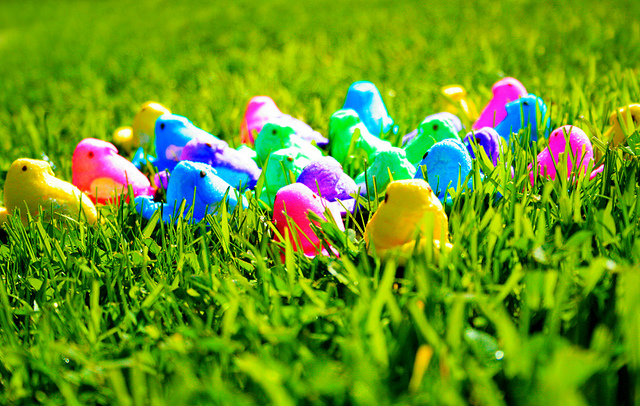It’s spring nesting season, but apparently there’s a lot of confusion around Easter time about one particular bird.
Peeps are everywhere, but they’re unlike any other bird known to humans. What accounts for their fluorescence? Their multiple colors? And their season seems to be extending — sometimes you can even see them as early as February these days.

The American Bird Conservancy has been applying some basic taxonomy to get a better handle on the species. The “yellow” form is the most widely recognized, but support is growing to grant separate species status to the blue, teal, pink and purple forms.
“There simply isn’t any evidence that these forms interbreed,” said ABC senior scientist David Wiedenfeld. “While they can often be found roosting in the same box, the fact is that nobody has ever seen an intermediate bird between the color morphs.”
ABC has highlighted Marshmallicious delicious as the Bird of the Week in an effort to draw attention to the mystery. Says the ABC:
Peeps typically make their appearance in the springtime, with numbers peaking in April. Despite their ubiquitous distribution and social nature, their migratory paths, wintering, and breeding areas are little known.
During their breeding season, Peeps can easily be found in suburban backyard habitats, where they lay clutches of colorful eggs in nests of brightly-colored plastic grasses. Adult and immature peeps can be quickly located by their sweet calls and neon plumage.
Although Peeps are heavily consumed, their populations appear to quickly rebound in subsequent years and therefore they are not a species of conservation concern. Enjoy this popular harbinger of spring!





